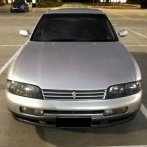Headwork (head Needs To Be Recond)
Announcements
-
Similar Content
-
Latest Posts
-
Yeah, you want the IACV to be running at around 30 "units", variously called "steps" or "duty cycle" depending on the person. That gives it room to go lower if need be and higher ditto.
-
By joshuaho96 · Posted
The RPM is just a target, the ECU will adjust things to try and hit that target but it's by no means guaranteed. If the IACV duty cycle is 0 or something like that and it's actually closing up fully then the idle is as low as it can physically go without reducing ignition timing. The problem can be something like the cold start valve in the IACV not closing fully, worn throttle shaft seals, torn rubber diaphragm in the brake booster allowing unmetered air, etc. -
Apexi, though I'm not comfortable with setting the idle, knowing me I'll f**k it up lol.
-
By Dose Pipe Sutututu · Posted
What ECU is on your car @silviaz? You can just change the idle target table yourself and the IACV duty cycle. Noting that if you play around with the screw you'll also need to revisit the idle base duty table as you will end up offsetting the lot. Another reason why DBW is superior, there's less mucking about.
-






Recommended Posts
Create an account or sign in to comment
You need to be a member in order to leave a comment
Create an account
Sign up for a new account in our community. It's easy!
Register a new accountSign in
Already have an account? Sign in here.
Sign In Now